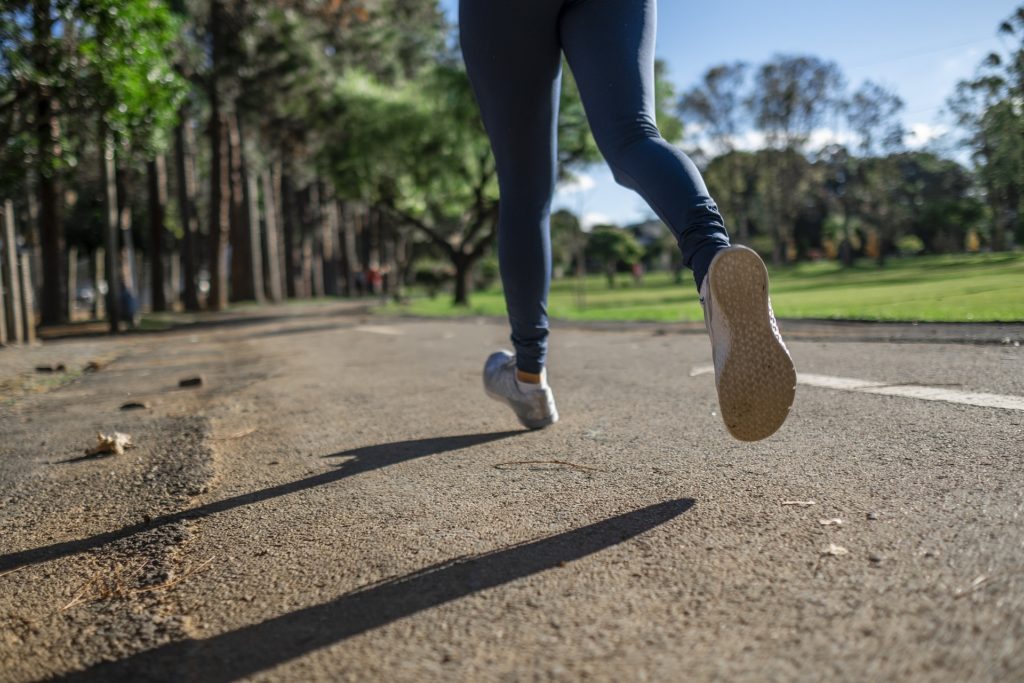Promising results support the development of large-scale randomized controlled trials of remote aerobic exercise training in individuals with MS-related cognitive impairment.

Results of a pilot study funded by Kessler Foundation showed that remote aerobic walking exercise training is a feasible and highly promising method for improving cognitive processing speed impairment in fully ambulatory persons with multiple sclerosis (MS). The findings of this single-blind randomized control trial support the design of a randomized, controlled trial in large sample of persons with MS
The study, titled “Feasibility of Remotely Delivered and Supported Aerobic Walking Exercise Training for Cognitive Processing Speed Impairment in Fully Ambulatory Persons with Multiple Sclerosis,” (doi: 10.1016/j.msard.2023.104709) was published online by Multiple Sclerosis and Related Disorders on April 07, 2023. The authors are Brian M. Sandroff, PhD, Carly L.A. Wender, PhD, Erica Weber, PhD, and Grace Wells, BS, of Kessler Foundation, and Robert W. Motl, PhD, of the University of Illinois Chicago.
Link: https://www.sciencedirect.com/science/article/abs/pii/S2211034823002134?via%3Dihub
The research team followed a group of 25 fully ambulatory persons with MS who were prescreened for deficits in cognitive processing speed; 19 completed the study as prescribed. The researchers employed the Symbol Digit Modalities Test (SDMT), a widely used neuropsychological test for assessing information processing speed in individuals with MS, and the California Verbal Learning Test (CVLT-II) as a widely used test of verbal learning and memory. Evaluations were conducted at baseline and after 16 weeks.
Participants were randomly assigned to 16 weeks of either remotely delivered and supported aerobic walking exercise training (intervention condition), or remotely delivered and supported stretching and range-of-motion activities (control condition). Participants were provided with wearable fitness trackers and weekly video consultations with an exercise specialist to ensure proper technique, safety, and adherence to the prescribed exercise regimen.
The results of the study were promising. Participants who were randomly assigned into the intervention condition demonstrated strong improvements in their SDMT scores after the 16-week study period relative to participants who were randomly assigned into the stretching condition, indicating that the remotely delivered aerobic walking exercise training had a positive impact on their cognitive processing speed. Additionally, the study showed that the participants had high adherence rates to the exercise program, with an average of 80% of the prescribed sessions being completed.
These findings are particularly significant because cognitive processing speed impairment is a common symptom of MS, affecting up to 70% of patients. Impairment is associated with reduced quality of life, increased unemployment, and decreased social functioning. With limited effective treatments available, this study is promising for individuals with this disabling symptom.
The remote delivery and support of the aerobic walking exercise training program also has major implications for the accessibility and convenience of care for individuals with MS. Many patients face barriers to attending in-person exercise programs, such as transportation issues or financial constraints. This study demonstrates that remotely delivered exercise programs can be just as effective as traditional in-person interventions, providing a more inclusive solution for persons with MS.
The researchers are optimistic about the potential applications of their findings. “Our study shows that remote aerobic walking exercise training is not only feasible but also might be efficacious for treating cognitive processing speed impairment in persons with MS,” said lead author Dr. Sandroff, senior research scientist in the Center for Neuropsychology and Neuroscience Research. “We anticipate that these findings will encourage the development of more accessible, convenient, and broad-scale exercise interventions, ultimately leading to improved quality of life for those affected by this challenging disease.”



